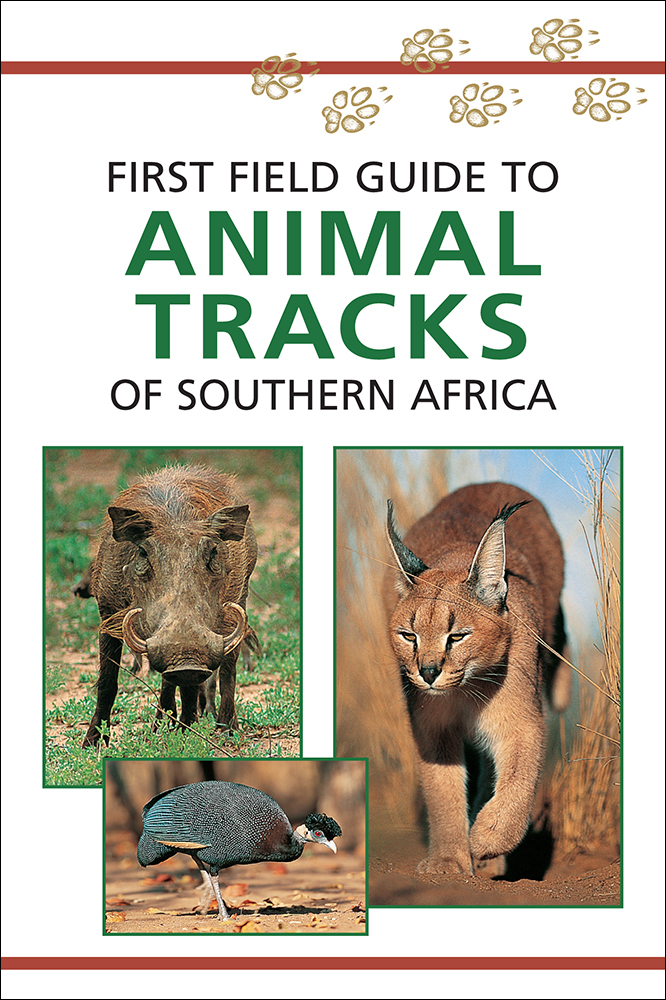Photographic Guide to Tracks and Tracking in Southern Africa, by Louis Liebenberg
Photographic Guide to Tracks and Tracking in Southern Africa by Louis Liebenberg. Penguin Random House South Africa, Nature. Cape Town, South Africa 2008. ISBN 9781868720088 / ISBN 978-1-86-872008-8
Photographic Guide to Tracks and Tracking in Southern Africa, by Louis Liebenberg. Introducing to the art of tracking.
Tracking may well be among the oldest of the sciences. It is also one of the most revealing: trackers gain a detailed understanding of animal behaviour through the interpretation of their tracks and signs, accumulating information - especially on seldom-seen rare or nocturnal species - which might otherwise remain unknown. Moreover, tracks and signs illuminate natural behaviour, while direct observation often influences the animal by the mere presence of the observer. Tracking is thus a less invasive process than visual study, a method of information gathering in which the amount of stress inflicted on an animal is minimized. One of the most important aids to successful nature conservation is, undoubtedly, an awareness of wildlife among the general pubHc. Even keen nature lovers are often oblivious to the wealth of animal life around them, simply because most animals are rarely seen. Indeed, ignorance may well be the single most dangerous threat to species survival posed by human 'progress'. The ability to recognize living forms from the signs they leave helps create that awareness. To the untrained eye the wilderness can appear desolate, but to someone who is 'spoor conscious' it will be full of life. Even if you never actually catch sight of the animals, you know that they are there, and by reconstructing their movements from the signs they leave behind, you will be able to visualize them, 'see' them in your mind's eye. In this way a whole story will unfold - a story of what happened when no-one was looking.
Tracks and signs
Tracking involves each and every indication of an animal's presence, including ground spoor, vegetation spoor, scent, feeding signs, urine, faeces, saliva, pellets, territorial signs, paths and shelters, vocal and other auditory signs, visual signs, incidental signs, circumstantial signs and skeletal signs. Footprints provide the most detailed information on the identity, movements and activities of animals in the wild. The spoor illustrations in this book derive from precise studies made under ideal conditions. In reality, though, one seldom finds two animals of the same species with identical footprints: nature simply does not work in that way. But these 'ideal' footprints do provide images that improve one's chances of recognizing spoor that may otherwise be overlooked. Conversely, the preconceived images could prompt 'recognition' of patterns in markings made by other animals, or even random markings, so one must be careful not see simply what one wants to see. While species may be recognized by general characteristics, each individual animal's spoor has its subtle distinctions, differences dictated by age, mass, sex, physical condition, the local terrain and the wider region (the nature of which gives rise to functional and environmental adaptations). The animal may also have a unique way of walking or a particular habit that distinguishes it from others. And, of course, there are random variations. Thus, for example, the Bushman trackers of the Kalahari, whose skill has been honed over the many generations, can follow a particular antelope, perhaps one they have wounded, and distinguish it from the rest of the herd. They are also able to track fellow humans, identifying not only the gender but the particular individual they are tracking. Women usually have smaller and narrower, and sometimes more 'curvaceous' feet than men; a slender body build usually means slender feet; stocky people tend to have shorter and broader feet. [...]
This is an excerpt from A Photographic Guide to Tracks and Tracking in Southern Africa by Louis Liebenberg.
Title: Photographic Guide to Tracks and Tracking in Southern Africa
Author: Louis Liebenberg
Publisher: Penguin Random House South Africa
Imprint: Nature
Cape Town, South Africa 2008
ISBN 9781868720088 / ISBN 978-1-86-872008-8
Softcover, 9 x 19 cm, 144 pages, 160 colour photos
Liebenberg, Louis im Namibiana-Buchangebot
First Field Guide to Animal Tracks of Southern Africa
This First Field Guide helps interpreting animal tracks to indentify the Southern African animals that have passed through an area.
A Photographic Guide to Tracks and Tracking in Southern Africa
Over 100 animal tracks found in Southern Africa are featured in this photographic guide. Great for hunting and tracking.

